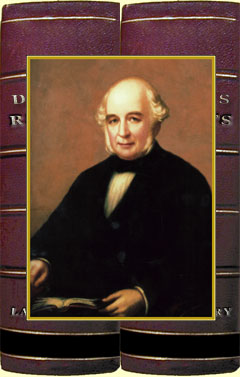My earlier post on Prigg v. Pennsylvania will provide some background that may be useful to understanding why Associate Justice Smith believed that the Fugitive Slave Act of 1850 was unconstitutional.
Justice Smith began by reviewing the debates at the Constitutional Convention that resulted in the various provisions contained in Article IV of the Constitution, including but not limited to the Fugitive Slave Clause. He argued that the debates showed that, in Article IV, when the Convention delegated powers to Congress, it did so explicitly. For example, Section 1 of Article IV, the Full Faith and Credit Clause, specifically provided that “the Congress may by general laws prescribe the manner in which such acts, records, and proceedings shall be proved, and the effect thereof.”
Justice Smith argued that, except to the extent that it explicitly granted powers to the federal government, Article IV was simply a series of compacts among the states about how to handle certain matters among themselves. Those compacts did not authorize or contemplate any involvement by the federal government:
“The history [of the Constitution Convention debates relating to Article IV] is important, as it not only justifies and requires a distinction to be taken between grants of power and articles of compact, but it clearly demonstrates that the convention all along discriminated between grants of power to the government, and articles of compact between the states, and was extremely jealous and cautious in making such grants, and only did so when it was deemed absolutely necessary.”
One of those compacts was the Fugitive Slave Clause contained in Section 2 of Article IV, which stated:
"No person held to service or labor in one state, under the laws thereof, escaping into another, shall, in consequence of any law or regulation therein, be discharged from such service or labor, but shall be delivered up on claim of the party to whom such service or labor may be due."
This clause, Justice Smith asserted, was the result of a quiet agreement “that the states would deliver up such fugitives from labor. No power was asked for the federal government to seize them; no such power was dreamed of; the proposition that the states should respectively deliver them up, was acquiesced in without any dissent."
Later, Justice Smith quoted all of Section 2 of Article IV – the Privileges and Immunities Clause, the Extradition Clause and the Fugitive Slave Clause. “Here is the whole of the section, without one word from which a grant may be inferred or implied.”
Although Justice Smith had made a strong case for the proposition that the Fugitive Slave Clause granted the federal government no power, he still had to deal with several counter-arguments. I will turn to those next.
Justice Smith began by reviewing the debates at the Constitutional Convention that resulted in the various provisions contained in Article IV of the Constitution, including but not limited to the Fugitive Slave Clause. He argued that the debates showed that, in Article IV, when the Convention delegated powers to Congress, it did so explicitly. For example, Section 1 of Article IV, the Full Faith and Credit Clause, specifically provided that “the Congress may by general laws prescribe the manner in which such acts, records, and proceedings shall be proved, and the effect thereof.”
Justice Smith argued that, except to the extent that it explicitly granted powers to the federal government, Article IV was simply a series of compacts among the states about how to handle certain matters among themselves. Those compacts did not authorize or contemplate any involvement by the federal government:
“The history [of the Constitution Convention debates relating to Article IV] is important, as it not only justifies and requires a distinction to be taken between grants of power and articles of compact, but it clearly demonstrates that the convention all along discriminated between grants of power to the government, and articles of compact between the states, and was extremely jealous and cautious in making such grants, and only did so when it was deemed absolutely necessary.”
One of those compacts was the Fugitive Slave Clause contained in Section 2 of Article IV, which stated:
"No person held to service or labor in one state, under the laws thereof, escaping into another, shall, in consequence of any law or regulation therein, be discharged from such service or labor, but shall be delivered up on claim of the party to whom such service or labor may be due."
This clause, Justice Smith asserted, was the result of a quiet agreement “that the states would deliver up such fugitives from labor. No power was asked for the federal government to seize them; no such power was dreamed of; the proposition that the states should respectively deliver them up, was acquiesced in without any dissent."
Later, Justice Smith quoted all of Section 2 of Article IV – the Privileges and Immunities Clause, the Extradition Clause and the Fugitive Slave Clause. “Here is the whole of the section, without one word from which a grant may be inferred or implied.”
Although Justice Smith had made a strong case for the proposition that the Fugitive Slave Clause granted the federal government no power, he still had to deal with several counter-arguments. I will turn to those next.








